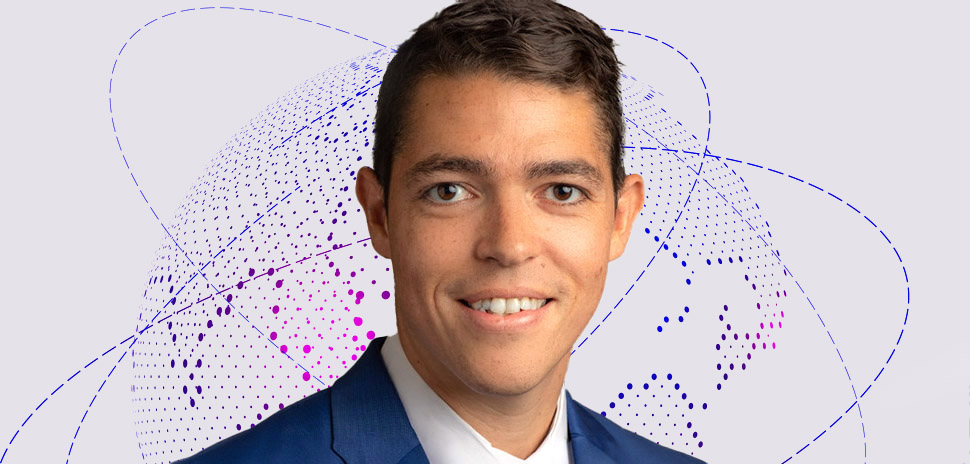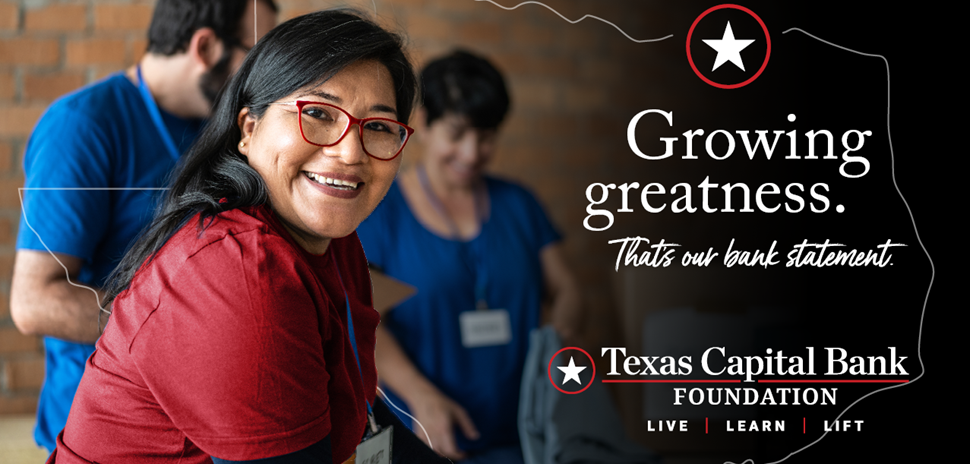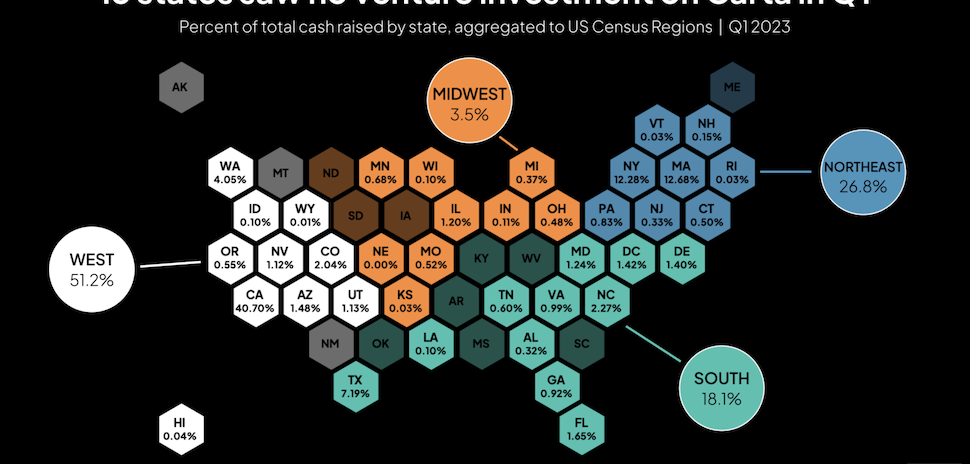Plug and Play—a Silicon Valley VC firm and innovation platform that connects startups, corporations, VC firms, universities, and government agencies—has a presence in over 50 locations across five continents. Over the last month, it’s announced its first two offices in North Texas, in Frisco and McKinney. For a look at how the platform works and what it aims to accelerate here, Dallas Innovates spoke with Sherif Saadawi, VP of partnerships at Plug and Play.
First, here’s how Plug and Play hit the ground in DFW with a one-two punch.
The platform’s first North Texas expansion—and second in Texas, after opening one in Cedar Park outside Austin earlier this year—was announced as a strategic partnership with the Frisco Economic Development Corp. In October, the Frisco EDC’s board of directors approved a performance-based incentive agreement with Plug and Play.
Many who think Frisco quickly think sports, since it’s the HQ home of the Dallas Cowboys at The Star as well as the home of FC Dallas, the Frisco RoughRiders, and an array of other teams, not to mention esports leaders like Complexity Gaming.
Accelerating sports technology in Frisco
Appropriately, Plug and Play Frisco will launch by running a Sportstech accelerator program focused on human potential and performance.
“We’re so proud to launch Plug and Play Frisco in an effort to build the world’s most impactful Sportstech program,” Plug and Play founder and CEO Saeed Amidi said in a statement last month. “By identifying, investing, and accelerating the most promising startups, we’ll build a robust ecosystem of local and global stakeholders to engage with us and the rest of the community,”
Frisco EDC President Jason Ford called his city “Sports City USA” and noted that Frisco is “an epicenter for innovation focused on maximizing human potential and performance.”
“This collaboration with Plug and Play will attract more investors to Frisco and strengthen our partnerships across many business technology verticals that help support local employers and corporates that continue to innovate in our own backyard,” Ford added.
In coming years, Plug and Play Frisco plans to add additional cohorts that reflect the North Texas innovation ecosystem focused on areas such as health, fintech, cybersecurity, and smart city technologies.
Expanding its expansion to McKinney for Enterprise and AI
In early December, Plug and Play entered into a strategic partnership with the McKinney Economic Development Corporation to establish a new office in McKinney, just east of Frisco. Aiming to bolster the city’s commitment to become “a vibrant hub for entrepreneurs,” Plug and Play McKinney’s inaugural program will be focused on Enterprise and AI, the platform said.
“Partnering with the McKinney Economic Development Corporation marks a significant milestone in our mission to amplify innovation in new regions,” Michael Olmstead, Chief Revenue Officer of Plug and Play, said in a statement. “Through this collaboration, we aim to create a dynamic entrepreneurial landscape and spearhead advancements in Enterprise and AI in McKinney.”
Michael Kowski, president and CEO of McKinney EDC, said the partnership “represents a deepened commitment to partner with like-minded organizations that will further strengthen that culture of innovation and technology in our own hometown.”
McKinney Mayor George Fuller added in a statement that Plug and Play’s “innovative spirit and dedication to supporting entrepreneurship and AI will undoubtedly bring great things to our city. We look forward to seeing their impact on McKinney and the North Texas region.”
Investing in over 1,600 companies over the past 17 years
So what does Plug and Play do? The platform says it “positions its partners at the forefront of industry trends and supports them throughout their innovation journey.” The platform’s current network has “over 550” corporate, government, VC, and university partners who seek collaboration with or investment in early-stage startups.
Since Plug and Play is itself a venture capital firm, a lot of its involvement is based on investment. Over the past 17 years, the platform says it has invested in “over 1,600 companies.”
That kind of action seems poised to pick up in North Texas.
DFW ‘really ticks all the boxes’
“I think DFW represents such a strong market for Plug and Play,” VP of Partnerships Sherif Saadawi told Dallas Innovates. “it’s kind of remarkable that we haven’t been there this whole time.”
“In almost every metric that we look for that makes a good ecosystem, DFW really ticks all the boxes,” he said. “It’s a big metro area just in terms of population. There’s a great startup ecosystem. There are 49 Fortune 1000 companies, I think 24 Fortune 500 companies in DFW.”
“A fundamental part of our model is working with corporations,” Saadawi added. “So on the corporate side, the investment is exciting. The startup ecosystem, even though it’s maybe not as advanced as say, California or New York, it’s a place where people are coming and have been coming for a while. In terms of growth, Frisco and McKinney are both really fast-growing cities. I think Frisco 20 years ago was about 25,000 people. Now they’re around 250,000. It’s just a place to be and I think there’s a lot of opportunity.”
“And also sports is a really natural fit for Frisco,” he said. “”Sports are like a religion in DFW.”
Plug and Play’s ‘three pillars’ start with VC investment
So how does Plug and Play work? Saadawi says it involves three pillars, starting with VC investments.
“We’re the most active VC in the world by volume of deals,” Saadawi told us. “Last year, for example, we invested in 247 companies. We’ve been doing that pretty consistently for the last decade or so. So in terms of number of investments, we’re either number one or have been up there for the last five to 10 years.”
Those investments have already included some in Texas, Saadawi noted, even before the platform had a physical presence in the state.
Corporate innovation: ‘matchmaking’ companies with startup solutions
“The second pillar is what we call corporate innovation,” Saadawi said. “This is where we work with over 500 corporate partners who basically see Plug and Play as an extension of their own innovation teams. They’ll come to us with challenges and then we’ll help connect them with technology in the form of startups that can solve them.”
Saadawi said it’s often faster and cheaper for companies like Walmart to work with a startup that’s already trying to create a solution themselves.
“So rather than reinventing the wheel, we go out and find the best solution for our partners and then connect them,” he said.
A key Plug and Play attraction for corporations is its global presence, with “about 57 locations” in “22 or 23 countries.”
“Let’s say we work with Walmart,” Saadawi said. “Most of their operations are in North America. We connect them with technology in places [where] they don’t have boots on the ground. Just because you’ve got some supply chain issue here in the U.S., there could be some great solution in Europe that you’re just not aware of because you don’t have boots on the ground there. And then we’ll connect companies with the best solution.”
Accelerator programs that hit the ground running
“Our last piece and the third pillar is the accelerator program,” Saadawi said. “We run over 60 of these accelerator programs across 22 different industry verticals, everything from sportstech to supply chain to sustainability to fintech.”
“In fintech, for example, we’ve got I think six different fintech accelerators that we run globally, with about 55 financial institutions that are partnered with us who participate in those accelerators. So they’re meeting the startups through those accelerators, as well as getting matched with startups through Plug and Play.”
A vast ecosystem with a ‘flywheel effect’—where ‘everyone’s a winner’
Saadawi says that what’s “really nice” about Plug and Play is the ecosystem it has built.
“One, it’s so vast,” he said. “But two, the three pieces—the investment, corporate, and accelerator program—we’ve created this kind of flywheel effect where each one of those are complementary to the other two pieces.”
So how does that “flywheel” help startups?
“We’re investors, but we can put them in front of decision makers at Walmart, Nike, Mercedes Benz, etc.,” Saadawi said. “It’s like plug and play, not just because we’ve got over 75,000 startups that we work with in our ecosystem.”
“For corporates, because we’re investors ourselves, they know we do our due diligence and the caliber of startups that we introduce them to is going to be very high quality. That helps us make good investments. So if we’ve got a startup that we’ve introduced to 10 corporations, and eight of them end up working with that startup, then there’s a good chance that we’ll invest in the startup because we’re seeing traction they’re getting before anyone else.”
“So everyone’s a winner,” Saadawi said. “Plug and Play makes great investments, our corporates get secret technology, and then our startups get to do business with our partners.”
Third North Texas accelerator to focus on fintech
Following up on Frisco’s sportstech accelerator and McKinney’s Enterprise & AI one, Plug and Play is already planning to launch its third accelerator program here, focused on fintech, shorthand for financial technology.
“And that’s going to kind of bounce between the two cities,” Saadawi said. “Our cohorts are three months long, and we run two cohorts per year. So we’ll do one in each city per year.”
Embedding in the North Texas community as an amplifier
Plug and Play aims to add to the North Texas startup ecosystem as an amplifier and “gap filler,” Saadawi stressed.
“Whenever we launch any of these new locations, it’s really to embed ourselves in the community,” he said. “Our approach is never displacing anything that’s happening regionally, but amplifying what’s already happening and finding out where we can fill out any existing gaps.”
“So, the more the merrier.”
![]()
Get on the list.
Dallas Innovates, every day.
Sign up to keep your eye on what’s new and next in Dallas-Fort Worth, every day.

































